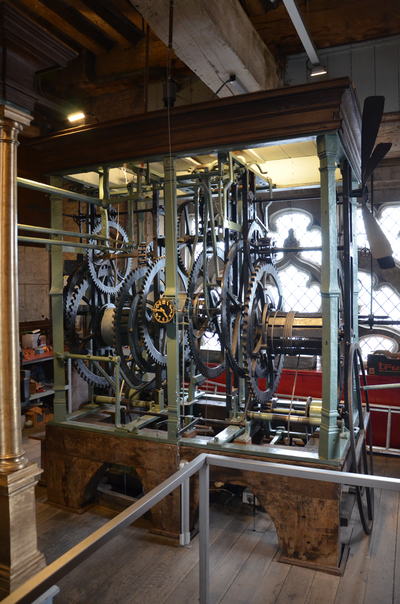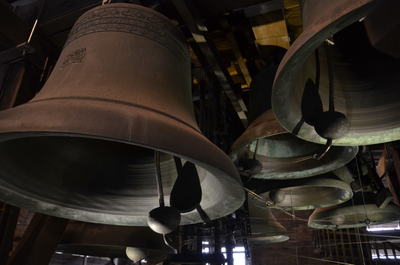|
Culture of the carillon in Belgium |
vertical divider
In the year 2014, UNESCO recognized the carillon culture in Belgium as the best practice in the protection of intangible cultural heritage. Across the country, there are 89 carillon, which is usually located in the belfry of a church or municipal building. The carillon consists of at least 23 bells, cast in bronze. The instrument can be operated by a carillonist or by of a special drum mechanism.
|
|
|
|
Największy karylion w Belgii znajduje się na wieży katedry św. Rumbolda. Z oryginalnego zestawu 49 dzwonów, które wciąż są w dobrym stanie, każdy ma swoją nazwę. Salwator waży 8884 kilogramy, Jehsus został odlany w 1490 roku, a Wyzwolenie to najnowszy nabytek z 1947 roku. Ponad tym karylionem znajduje się nowy, na którym wygrywane są koncerty w okresie letnim. Oba karyliony mają w sumie 98 dzwonów i ważą przeszło 80 ton.
Najstarsza szkoła karylionistów mieści się w Mechelen, Royal Carillon School Jef Denyn.
Najstarsza szkoła karylionistów mieści się w Mechelen, Royal Carillon School Jef Denyn.
Also in Bruges, on the top of the monumental belfry, there is a magnificent 47 bell, a carillon. The drum, being the mechanism of the carillon, cast from bronze, in one piece, Antoon de handt in 1748 year. It has 2.5 meters in length and 2.06 meters in diameter. It is believed that its weight reaches nine tons. It has 250 rows, each with 122 square holes. Together, this gives the number of 30.500 square holes for the pin. All this elaborate mechanism is used to run 47 bells that are part of the carillon. The carillon rings every fifteen minutes and plays the melody every half hour.

















